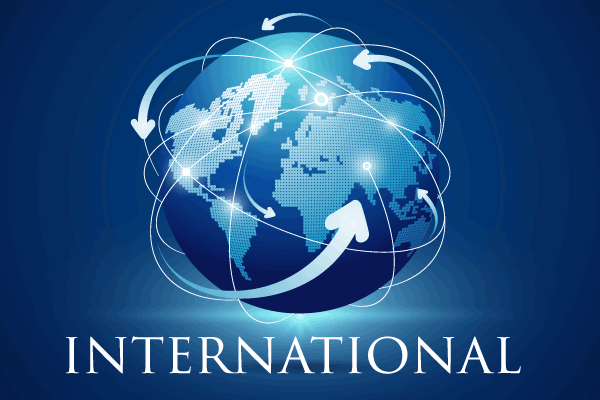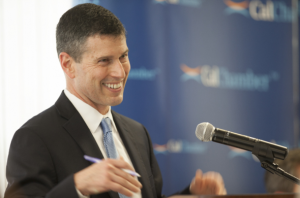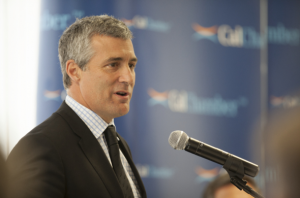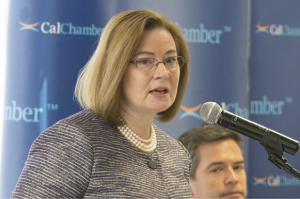 The importance of Trans-Pacific trade relations was the subject of a recent international forum at the California Chamber of Commerce.
The importance of Trans-Pacific trade relations was the subject of a recent international forum at the California Chamber of Commerce.
More than 200 forum attendees joined a representative from the Office of the U.S. Trade Representative, the Consul General of New Zealand and a representative from the U.S. Department of Commerce to discuss vital issues to the successful passage and implementation of the Trans-Pacific Partnership (TPP).
The United States, Australia, Brunei Darussalam, Canada, Chile, Japan, Malaysia, Mexico, New Zealand, Peru, Singapore and Vietnam have successfully concluded the negotiations of the Trans-Pacific Partnership Agreement (TPP). In addition, more countries may join the trade partnership.

Negotiation/Approval Process
Drew Quinn, deputy TPP chief negotiator, Office of the U.S. Trade Representative, explained to the audience that the TPP is the most significant trade negotiation in a generation, and promises significant economic benefits for American businesses, workers, farmers, ranchers and service providers.
“The TPP is clearly the centerpiece of any discussion of U.S. trade relations now with the Pacific,” said negotiator Quinn.
The TPP contains 30 chapters of trade, labor, intellectual property, and environmental regulations. Those chapters will eliminate 18,000 foreign taxes on U.S. products, boost exports, protect intellectual property rights, and strengthen labor rights and human rights abroad.
Trade serves U.S. interests, Quinn explained. “While there is a lot of rhetoric… the fact is, American businesses, many of them, companies, farms, sell half or more of their product overseas…
“We are the second largest exporting nation in the world. We have a lot of successful exporters in all ranges of the economy, our ability to innovate, our resilience is something, frankly that is envied by a lot of other economies in the world.”
In closing, Quinn reiterated that the TPP agreement is important as a vehicle for Trans-Pacific-wide economic integration. This regional agreement sets a high standard that will enhance the competitiveness of the countries that are part of it and help facilitate trade and promote investment between them, increasing their economic growth and development.
“The rest of the region is not standing still,” Quinn said. “We have to realize that having worked with our trading partners for over the course of half a decade to negotiate this very ambitious agreement with very difficult political choices for many of our trading partners, the United States always has the right to say, ‘We’re not ready for this,’ but those other countries aren’t going to stand back. They want to have access to these markets in the region, they’re proceeding with other negations even now and if untimely we aren’t able to participate by getting TPP approved, they will move forward without us.”

International Perspective
The TPP is seeking to help establish a trade and investment framework that supports job creation, promoting competitiveness, and expanding trade in the dynamic Asia-Pacific region, explained the Honorable Leon Grice, consul general of New Zealand in Los Angeles. The agreements also are seeking to advance core values in the agreement, such as transparency, labor rights, and environmental protection.
“Free trade agreements are about deregulating so you can compete and be successful,” said Consul General Grice. “But this is also about regulation. The agreement is about regulating labor standards, about regulating environmental standards and it is about regulating things like human trafficking. The exciting thing is this is an agreement designed to expand.”
This expansion means that other countries are looking to join TPP and are evaluating the necessary reforms to comply and meet those important standards to participate in the agreement.
Grice focused the remainder of his speech on labor, the environment, data, state owned enterprises (SOEs).
He explained that the TPP expands labor protections, allowing workers to join a union of their choice, stop the importation of goods made from forced labor; governments must take steps to combat human trafficking.
If the participating governments of TPP don’t comply, then trade sanctions will be levied, Grice said. “Economic diplomacy is a way better way of doing business than aircraft carriers.”
The environment is also a core part for the TPP agreement. Partners cannot create zones where environmental protections don’t apply to increase their trade. Economic sanctions also willbe enforced if a partner fails to comply.
State owned enterprises, which are a huge part of some of the economies in the TPP region, have to be transparent and use private sector reporting obligations. “This is a powerful reform of markets in the Asia Pacific,” Grice explained.
Regarding data movement, the TPP requires the free movement of information data across borders.
“That is one of the truly 21st century aspects of this agreement,” Grice said.

TPP and Digital Economy
Judy Rising Reinke, deputy director-general of the U.S. and Foreign Commercial Service from the U.S. Department of Commerce reminded everyone that May is world trade month.
“Trade is local because it is people and it’s businesses and it’s peoples’ well being,” said Reinke. “While sometimes we can get caught up in incredible important policy discussions, it comes down to the fact that World Trade Month is about the individuals in this room, the people they employ and the prosperity of California.”
Reinke said in her role she is an observer of trade and sees two major trends coming together, the digital economy and the TPP.
“We are fundamentally changing as a business environment and I think it’s quiet forward looking that the negotiators in these 12 countries that they recognize how the future of business is done,” said Reinke.
Reinke says this transition to a digital economy is the fourth industrial revolution and called it “amazing.”
One of every five Internet users in the world is in a country affected by TPP, Reinke said, which is all the more reason that TPP has to get the rules right because it is setting the standard for the rest of the world.
“Digitization’s of economies are going to affect globalization forever,” Reinke said, “Through agreements like the TPP…. We believe the U.S will become an even stronger trading parent for our 11 partners in the Pacific region.”
Background
The TPP was signed by trade ministers representing the 12 parties to the agreement on February 4, 2016, after more than five years of negotiations. Each country’s government now has to approve the text of the agreement. The United States has the most complicated review process. Under the rules of fast track, once the President signs the TPP, Congress will be on the clock to have an up-or-down vote in both houses without amendments or filibusters.
On May 18, the U.S. International Trade Commission released its full economic review of the deal.
Once the implemented bill is introduced in the U.S. House of Representatives and the U.S. Senate, Congress has a maximum of 90 days to approve or disapprove the trade deal, but can move much more quickly. It is hoped that the Trans-Pacific Partnership will be considered in 2016.
For more information, visit www.calchamber.com/TPP.


